Have you ever had a patient who does everything well during PT sessions, but makes very little progress outside of the clinic? Have you ever been frustrated by the fact that some patients feel better when they come to physical therapy, only to report a resurgence of symptoms the next day? These patients are performers. They perform well in physical therapy, but no real motor learning has occurred. Despite sound orthopedic interventions, these patients display little carryover from the clinic to their daily lives. Why? Because we have forgotten about neuroscience.
Drawing on neuroscience can enhance the way we practice as orthopedic physical therapists. The brain drives our movements and is responsible for our ability to learn a new skill. If we only focus on the musculoskeletal system, we are missing a critical piece of the pie. Our manual interventions and therapeutic exercise prescription are important, but if we want to enact lasting change on a patient’s faulty movement patterns, we must consider neurological principles of motor learning. In this guide, I provide motor learning strategies that we can incorporate into our daily treatment sessions in order to deliver improved patient outcomes.
Choose cues that will promote motor learning
During a treatment session, we not only need to be cognizant of the effectiveness of our chosen exercises but we also need to be mindful of how we explain these exercises to our patients. When our patients are completing their exercises, we use cues to relay instructions. The types of cues may not seem like they make a large difference in the clinic, but they will affect how well our patients can learn new movement patterns.
Explicit cues provide patients with instructions according to a precise kinematic strategy. Simply put, explicit cues tell the patient how to move. These types of cues establish what is known as an internal focus of attention because they concentrate on a specific body movement. For example, if a patient is squatting, explicit cues would tell the patient to squeeze his or her glutes and keep the pelvis level. These cues tell the patient exactly what to do and they are focused on the patient’s body. They often seem like the best choice, but research has demonstrated that explicit cues limit the patient to a predetermined movement pattern. They remove the opportunity for the patient to develop an individual strategy and thus make it more difficult to remember the skill. Essentially, when we give explicit cues we do all of the “brain work” for the patient.
Implicit cues, on the other hand, provide the patient with goal oriented cues. They establish an external focus because they emphasize object movement. If we go back to our squatting example, to give an implicit cue we would have a patient hold a stick horizontally above his or her head and cue to keep the stick level. For the stick to remain level the patient will have to recruit the glutes and also keep the pelvis level, but he or she has to figure this out independently. When we provide a cue according to the outcome, we allow patients to develop their own strategies to arrive at the goal. Cues that are delivered according to outcomes, with an external focus, will allow patients to develop their own kinematic solutions.
What kind of cues do YOU give?
As you have probably noticed when reading this, physical therapy is full of explicit cues with an internal focus. Most of us prefer to give explicit cues, telling patients exactly how to perform exercises. It’s tempting to do this since we want to make sure they are doing exercises correctly. However, this precise instruction is inhibiting carryover outside of the clinic. Explicit cues with an internal focus may sound as though they allow the therapist to better control the movement, but they actually inhibit acquisition of a new skill.
The movement science literature promotes the use of implicit cues with an external focus because they promote motor learning. Overall, we want to direct a patient’s attention to the outcomes of movements instead of the specific movements themselves. By setting up a goal instead of providing a specific strategy, we allow our patients to develop their own strategies, which they are more likely to remember. Explicit cues will constrain our patients’ movement patterns because we tell them exactly what to do, but implicit cues will allow patients to actually learn the movements. As a result, our patients experience changes on a neurological level. If you think about this on a personal level it makes sense too. Don’t you learn better when you have to figure something out for yourself as opposed to when someone tells you exactly what to do?
Should we ever use explicit cues?
You may be wondering if explicit cues are ever appropriate. The answer is sometimes. Studies show that individuals who are completely novice to a skill may benefit from explicit cues to decrease the neurological demand of learning a brand new skill. Descriptive cues with precise instructions will allow patients to perform complicated movements correctly when they are in the initial stage of learning. However, once the learner has been exposed to the skill he or she is no longer novice and we should begin using implicit cues with an external focus of attention.
Provide feedback based on the complexity of the movement
The type and amount of feedback we give to our patients plays a considerable role in the motor learning process. Providing feedback 100% of the time will improve performance during the session, but it is often detrimental to learning. We often think that, by correcting every little movement, we are helping our patients. In reality though, this allows patients to perform well in the clinic, but fails to promote true motor learning.
The type and amount of feedback we give will depend on how complicated the task or exercise is. If the exercise is simple, meaning it involves less degrees of freedom and can be learned in a single session (think straight leg raise), then we should delay our feedback. Let patients complete these types of exercises before correcting them. We can let them make a few mistakes and provide a summary of feedback after they are finished with the exercise. The task is simple enough that we can sum up the feedback at the end.
For a complex task, those with multiple degrees of freedom and that require multiple sessions to master (think changing a patient’s running form), we should provide a high frequency of feedback initially. However, once a level of mastery is achieved with a high frequency of feedback, we should reduce the feedback and allow our patients to make errors. Trial and error practice enhances motor learning. Although errorless practice may initially result in better performance, patients benefit from errors in the acquisition and retention of motor tasks.
Again, think about this on a personal level. Don’t you learn from your mistakes? Aren’t you less likely to make an error that you’ve made before. It’s because your brain recognizes it – you learned!
Repetition and practice are key
Motor learning will not occur without repeated practice. In fact, no learning occurs without repetition and practice. Think about when you first learned to shoot a basketball or when you had to memorize anatomy. You achieved this by using repetition. Repetition is a requirement for lasting neural changes because it fosters neuroplasticity. Neuroplasticity means that your brain is malleable to change. Neuroplasticity is what allows us to learn new languages, change our habits and move differently.
In order to truly retain a new movement pattern we need to practice it – a lot. Neuroplasticity is enhanced with continued practice of a skill over time. Repetition and practice of a specific task has been proven to yield the best motor learning results. For example, in a study where basketball players shot baskets from a variety of locations, the greatest success was seen at the foul line even when the lines were obscured. This should not be too surprising to any of us. There is probably no place on the court that basketball players shoot from more. Massive amounts of practice from this distance results in the greatest skill retention.
The same principles apply to our work in the clinic. Once we’ve established an exercise program and have given proper cues and feedback, we need to encourage repeated practice of that movement. Repetition and practice will drive home the motor learning process.
Physical therapists are movement experts – let’s own that domain
No other profession has the knowledge and the skills to change movement patterns the way physical therapists do. We also have more contact with patients than most other health professionals. It is our responsibility to harness our knowledge of the whole body, including the brain, in order to deliver the best results to our patients. Movement re-education and motor learning play a significant role across all variations of physical therapy, whether you work with athletes, patients who have suffered a stroke, amputees, or patients with osteoarthritis. When we consider the influence of the brain, we can become more effective practitioners and allow our patients to learn new movement patterns. Now let’s make sure our patients aren’t just performing. Let’s make sure they are truly learning!
References
Adams JA, Goetz ET, Marshall PH. Response feedback and motor learning. J Exp Psychol. Mar 1972;92(3):391-397.
Gokeler, A., Benjaminse, A., Hewett, T.E., Paterno, M.V., Ford, K.R., Otten, E., Myer, G.D., 2013. Feedback techniques to target functional deficits following anterior cruciate ligament reconstruction: implications for motor control and reduction of second injury risk. Sports medicine 43, 1065-1074.
Heiderscheit BC, Chumanov ES, Michalski MP, et al. Effects of Step Rate Manipulation on Joint Mechanics during Running. Medicine & Science in Sports & Exercise 2011;43(2):296-302.
Keetch KM, Schmidt RA, Lee TD, Young DE. Especial skills: their emergence with massive amounts of practice. J Exp Psychol Hum Percept Perform. Oct 2005;31(5):970-978.
Perkins-Ceccato N, Passmore SR, Lee TD. Effects of focus of attention depend on golfers’ skill. Journal of sports sciences 2003;21(8):593-600.
Prather DC (1971) Trial-and-error versus errorless learning: training, transfer, and stress. Am J Psychol 84: 377-386.
Remple, M.S., Bruneau, R.M., VandenBerg, P.M., Goertzen, C., Kleim, J.A., 2001. Sensitivity of cortical movement representations to motor experience: evidence that skill learning but not strength training induces cortical reorganization. Behav Brain Res 123, 133-141.
Schmidt RA. A Schema Theory of Discrete Motor Skill Learning. Psychogical Review. 1975;82(4):225-261.
Willy, R.W., Davis, I.S., 2011. The effect of a hip-strengthening program on mechanics during running and during a single-leg squat. J Orthop Sports Phys Ther 41, 625-632.
Willy RW, Buchenic L, Rogacki K, et al. The effects of a gait retraining program using mobile biofeedback in high risk runners. Proceedings of the 3rd International Patellofemoral Pain Retreat 2013.
Willy RW, Davis IS. Varied response to mirror gait retraining of gluteus medius control, hip kinematics, pain, and function in 2 female runners with patellofemoral pain. J Orthop Sports Phys Ther 2013;43(12):864-74.
Wouters, I., Almonroeder, T., Dejarlais, B., Laack, A., Willson, J.D., Kernozek, T.W., 2012. Effects of a movement training program on hip and knee joint frontal plane running mechanics. Int J Sports Phys Ther 7, 637-646.
Wulf, G., McConnel, N., Gartner, M., Schwarz, A., 2002. Enhancing the learning of sport skills through external-focus feedback. J Mot Behav 34, 171-182.
Wulf G, Hoss M, Prinz W. Instructions for motor learning: differential effects of internal versus external focus of attention. J Mot Behav 1998;30(2):169-79.
Wulf G, Shea C, Lewthwaite R. Motor skill learning and performance: a review of influential factors. Med Educ 2010;44(1):75-84.
Wulf G, Shea CH. Principles derived from the study of simple skills do not generalize to complex skill learning. Psychon Bull Rev. Jun 2002;9(2):185- 211.
Zachry, T., Wulf, G., Mercer, J., Bezodis, N., 2005. Increased movement accuracy and reduced EMG activity as the result of adopting an external focus of attention. Brain Res Bull 67, 304-309.
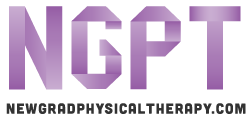 NewGradPhysicalTherapy.com The Largest Online Resource For New Grad Physical Therapists
NewGradPhysicalTherapy.com The Largest Online Resource For New Grad Physical Therapists


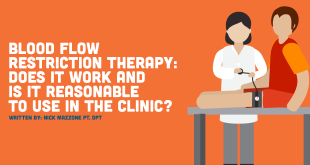
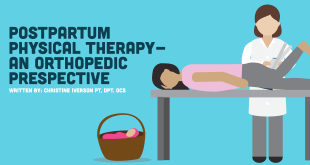
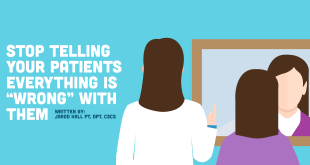
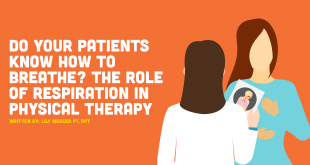
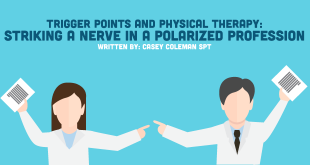
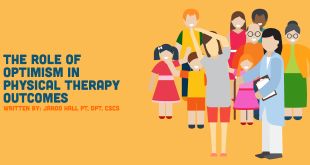
Thank you for this article! I have always been interested in motor control concepts but struggled to see how they fit into my daily orthopedic practice (we learned it more from a neurological patient perspective). Very helpful.
Hi Marian! So glad you liked the article. Our neuro knowledge can be a game changer in orthopedics!